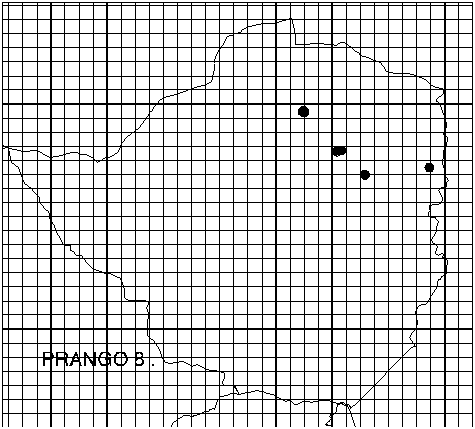
Home
Mission
Overview of Project
Project Staff
Sponsors
Achievements
Checking, Illustrations
Upcoming Activities
Id and Species Lists
Protea Information
Protea Gallery
Growing Proteas
Interim Dist. Maps
Publications
Afrikaanse Inligting
![]()
IDM Zimbabwe - Northern Woodland Sugarbush - Protea angolensis
Mountain Sugarbushes tend to have the largest heads (over 70 mm long). Similarly, their leaves are large (100-200 mm long) and either hairy or hairless. The involucral bracts may be either hairy or hairless, and are usually slightly longer than the flowers. The petals are longer than 45 mm. The involucral bracts tend not to close after flowering (and thus do not protect the fruits as in other proteas). The involucral receptacles rise in the centre to a distinctive point.
Protea angolensis - Northern Woodland Sugarbush
Variable in habit from multi-stemmed shrubs to 0.5m tall to trees to 3m tall with a single stem. Leaves 100-160 mm long, 20-80 mm wide. Flowerhead solitary, 70-100 mm long. Petals with tube with short hairs. Style 60-70 mm long. Only the white flowered form is known from Zimbabwe.
A solid black dot indicates where the species is found.

Protea angolensis var. angolensis Dwarf Northern Woodland Sugarbush
Pr ango a: a dwarf plant to 1m tall, with a rootstock. Leaves 20-60mm wide. Involucral bracts rapidly maturing to hairless. Perianth tips usually hairy, white.
Found in open grasslands and on the edges of dambos. By far the most commonly encountered var..
Protea angolensis var. divaricata Northern Woodland Sugarbush
Pr ango d: small tree to 4m tall, with a single stem. Leaves 30-100mm wide. Involucral bracts with silky hairs. Perianth tips hairless, white.
Found as an undershrub in Brachystegia Woodland, Brachystegia-Uapaca-Parinari Woodland, and secondary bush.
Beard noted hybrids between Pr welwitschii and Pr angolensis. It
should be fun to try and determine if these still persist in the populations in which they
were found. The hybrids should be hairy and large. Unfortunately, the locality details are
rather vague. They are:
1. Near Harare Central Divistion –1954 (Rodin 4260)
2. Farm Tanglewood, Ruwa District – 1958 (Miller 5340)
3. Harare District, sandveld – 1952 (Whellan 36008).